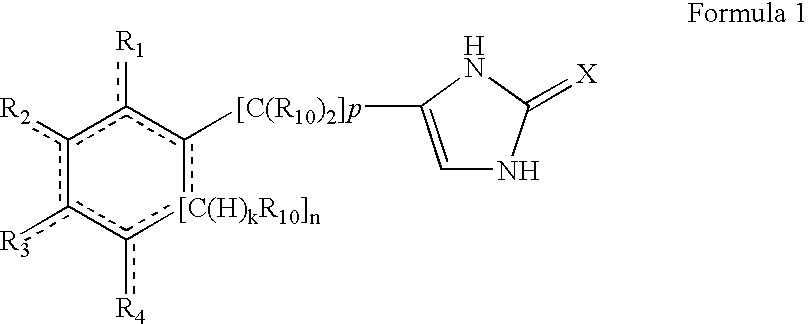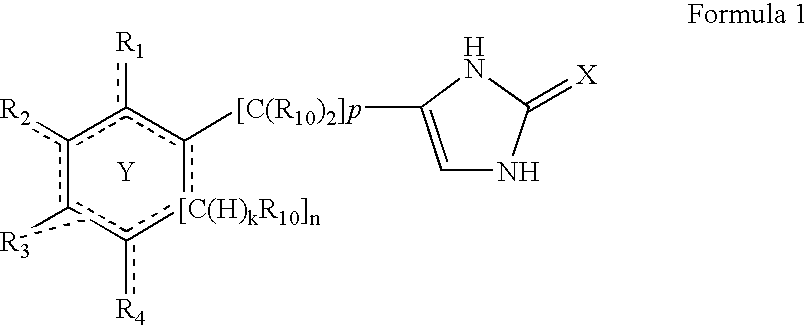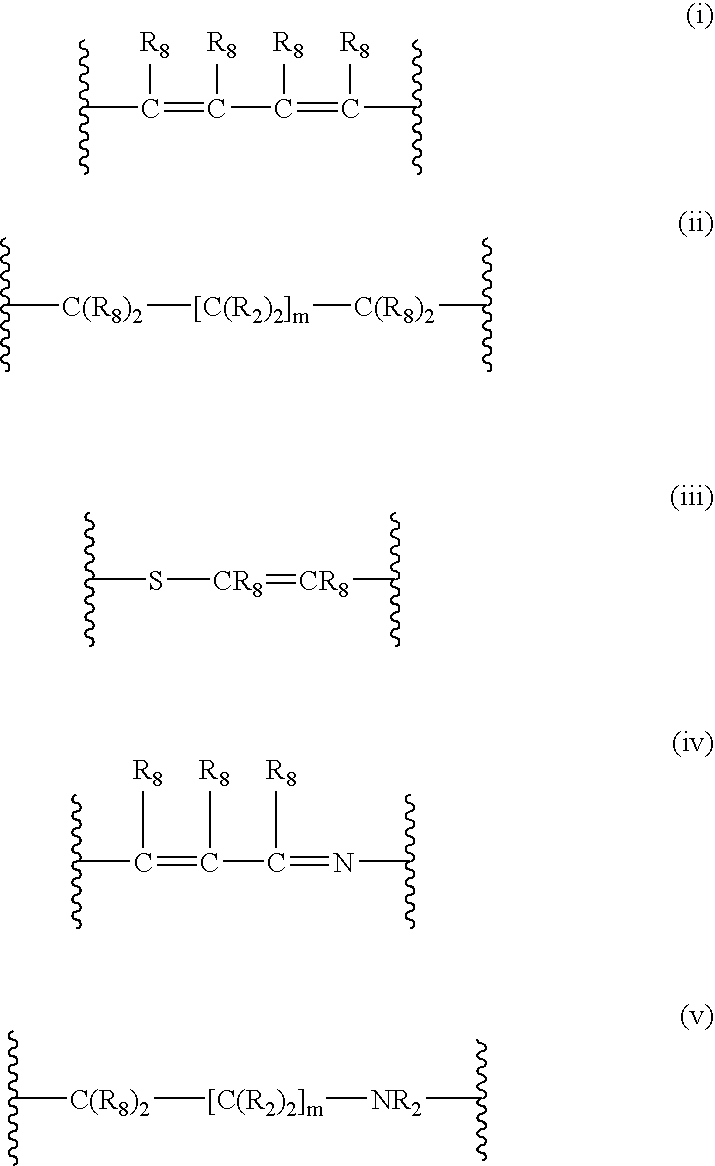4-(substituted cycloalkylmethyl) imidazole-2-thiones, 4-(substituted cycloalkenylmethyl) imidazole-2-thiones, 4-(substituted cycloalkylmethyl) imidazol-2-ones and 4-(substituted cycloalkenylmethyl) imidazol-2-ones and related compounds
a technology of cycloalkylmethyl and imidazole, which is applied in the field of substituting cycloalkylmethyl and imidazole2thiones, can solve the problems of many compounds found to be effective agents in pain treatment that are often found to have undesirable side effects, and the use of non-selective alpha-adrenergic blockers such as phenoxybenzamine and phentolamine is said to be limited, and achieves no or only minimal
- Summary
- Abstract
- Description
- Claims
- Application Information
AI Technical Summary
Benefits of technology
Problems solved by technology
Method used
Image
Examples
example a
[0132]
[0133] A solution of 3,4,5,6-tetrahydro-2H-pentalen-1-one (Intermediate A1) (prepared in accordance with Cooke et al. J. Org Chem. 1980, 45, 1046, incorporated herein by reference) (1.5 g, 12.3 mmol) in MeOH (30 mL) and CeCl3-7H2O (3.6 g, 14.6 mmol) at 0 EC was treated with NaBH4 (494 mg, 14.6 mmol). The solution was allowed to warm to rt and stirring was continued for 30 min. Water (100 mL) and diethyl ether (150 mL) were added. The organic layer was dried over MgSO4, filtered and evaporated to dryness. The alcohol (Intermediate A2) was used in the next step without further purification.
[0134] A solution of the alcohol (Intermediate A2) (0.85 g, 6.9 mmol) in ethyl vinyl ether (50 mL) at rt was treated with Hg(OAc)2 (1.75 g, 5.5 mmol) at rt for 18 h. The mixture was quenched with 5-10% KOH solution (80 mL) and the product was extracted with 50% ether:hexane (3×80 mL) and dried over MgSO4. The organic layer was filtered and evaporated under vacuum. The crude vinyl ether (Inter...
example a-1 (
Compound 2)
[0138] Use of 3-methyl-cyclopent-2-enone (commercially available from Aldrich) in Method A produced 4-(3-methyl-cyclopent-2-enylmethyl)-1,3-dihydro-imidazole-2-thione (Compound 2).
1H NMR (500 MHz, CDCl3 w / TMS): δ 11.5 (brs, 1H), 11.3 (brs, 1H), 6.43 (s, 1H), 5.23 (s, 1H), 2.95 (s, 1H), 2.55-2.45 (m, 2H), 2.20 (brs, 2H), 2.08-2.06 (m, 1H), 1.69 (s, 3H), 1.49-1.47 (m, 1H).
example a-2 (
Compound 3)
[0139] Use of 3-ethyl-cyclopent-2-enone (available in accordance with the publication of Woods et. al., J. Amer. Chem. Soc. 1949, 71, 2020, incorporated herein by reference) in Method A produced 4-(3-ethyl-cyclopent-2-enylmethyl)-1,3-dihydro-imidazole-2-thione. 1H NMR (500 MHz, CD3OD-d4): δ 6.53 (s, 1H), 5.26 (s, 1H), 2.91 (brs, 1H), 2.51-2.37 (m, 2H), 2.26-2.22 (m, 2H), 2.08-2.02 (m, 3H) 1.52-1.48 (m, 1H), 1.03 (t, J=8.0 Hx, 3H).
PUM
| Property | Measurement | Unit |
|---|---|---|
| concentration | aaaaa | aaaaa |
| temperature | aaaaa | aaaaa |
| withdrawal threshold | aaaaa | aaaaa |
Abstract
Description
Claims
Application Information
 Login to View More
Login to View More - R&D
- Intellectual Property
- Life Sciences
- Materials
- Tech Scout
- Unparalleled Data Quality
- Higher Quality Content
- 60% Fewer Hallucinations
Browse by: Latest US Patents, China's latest patents, Technical Efficacy Thesaurus, Application Domain, Technology Topic, Popular Technical Reports.
© 2025 PatSnap. All rights reserved.Legal|Privacy policy|Modern Slavery Act Transparency Statement|Sitemap|About US| Contact US: help@patsnap.com



